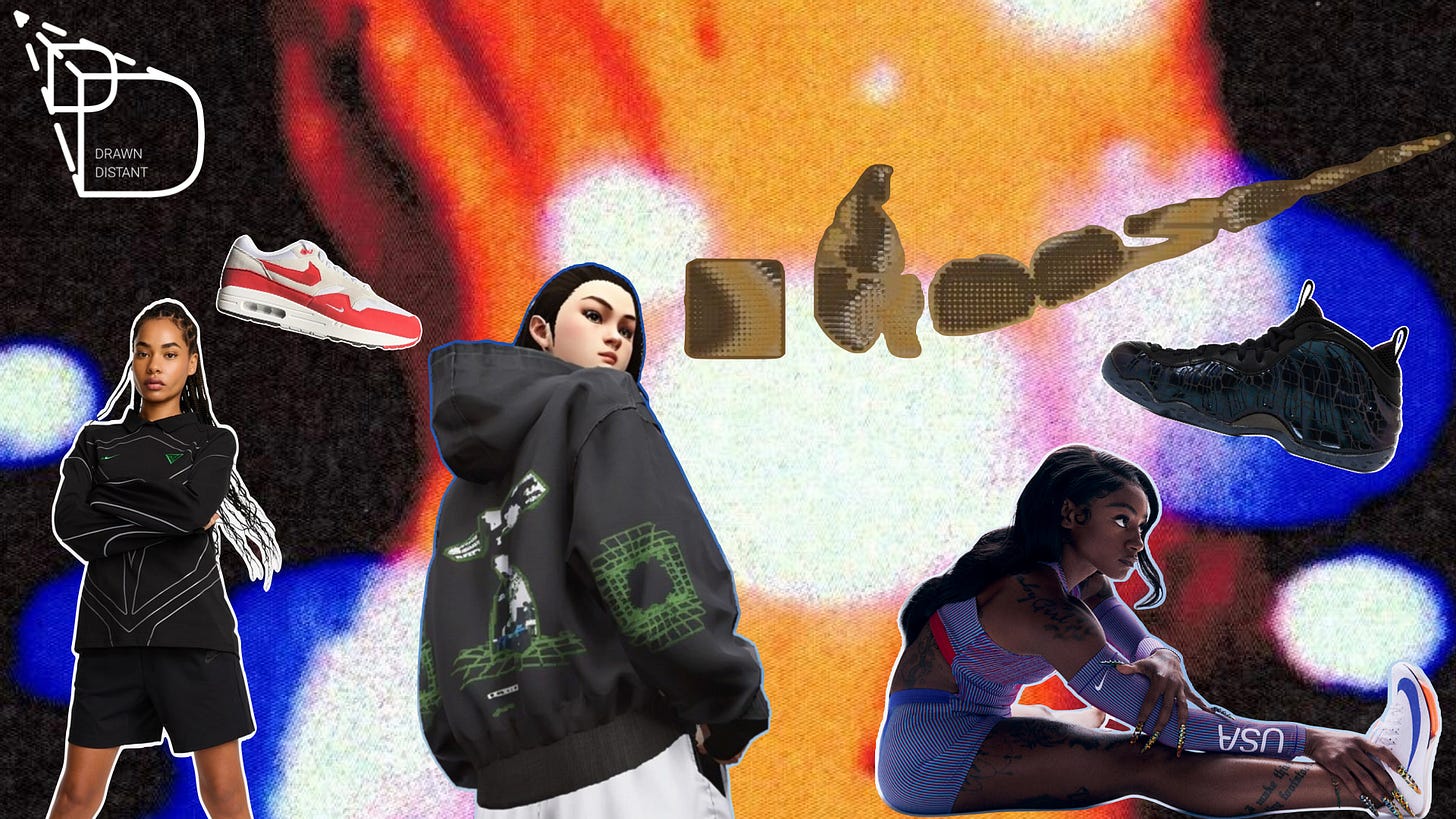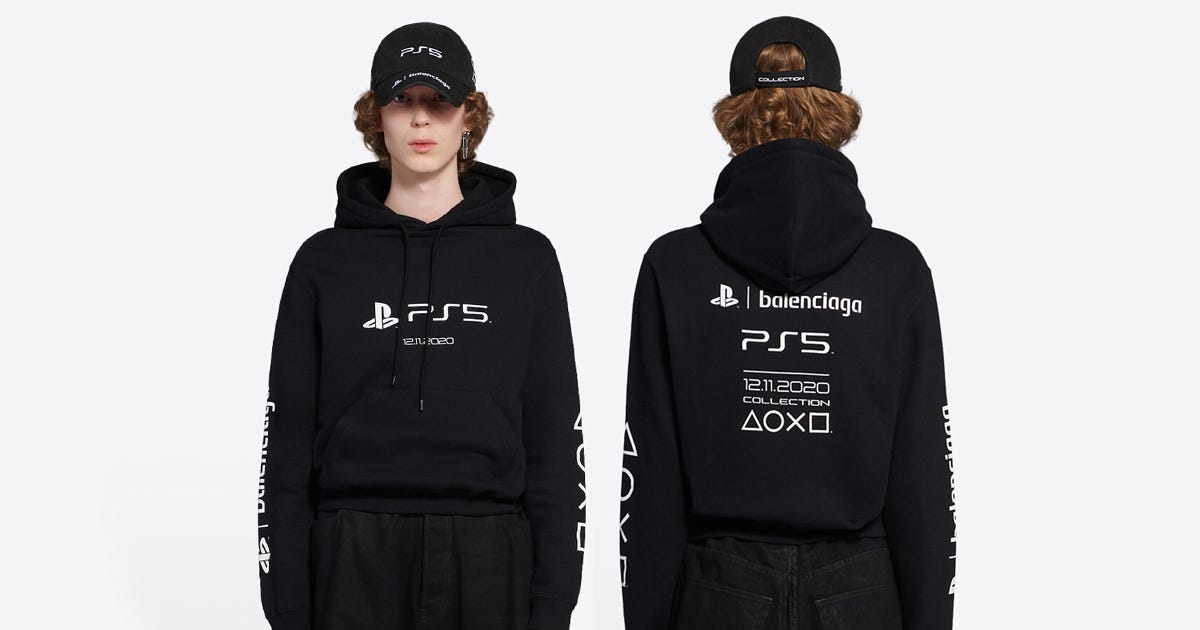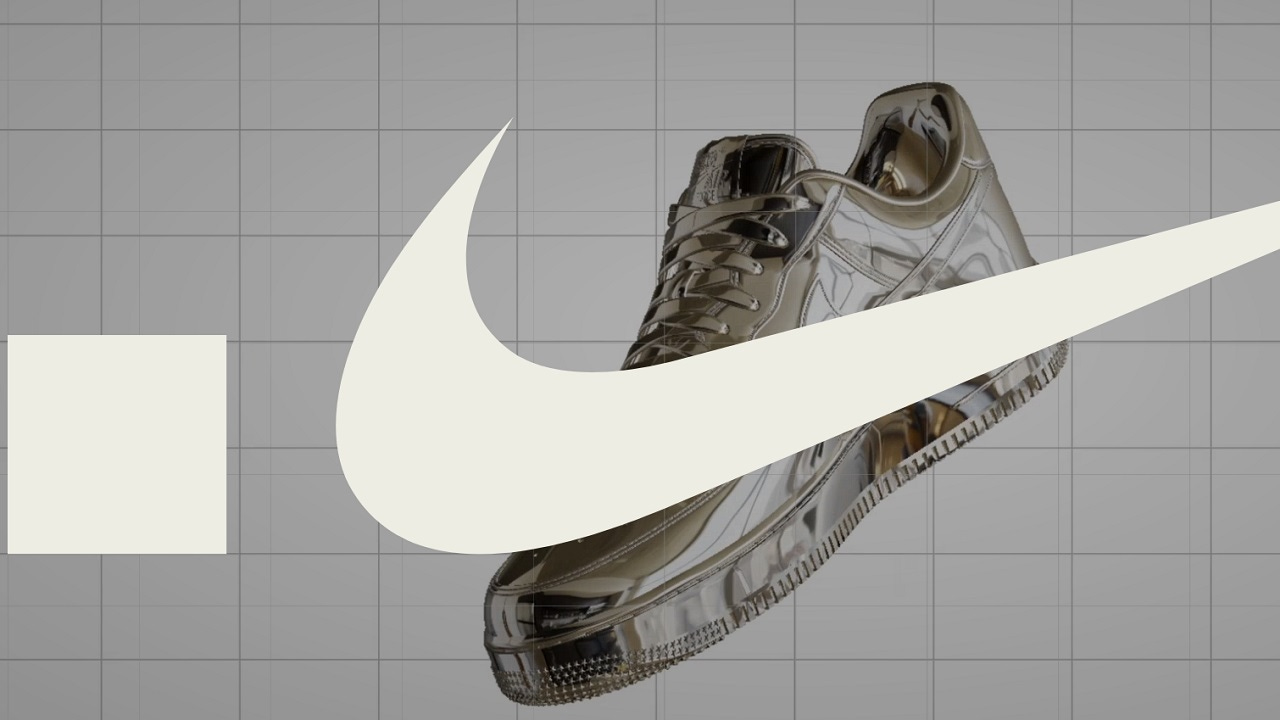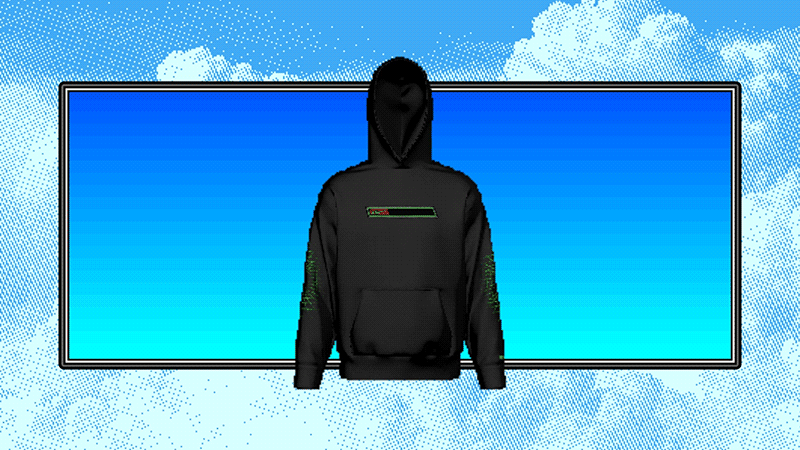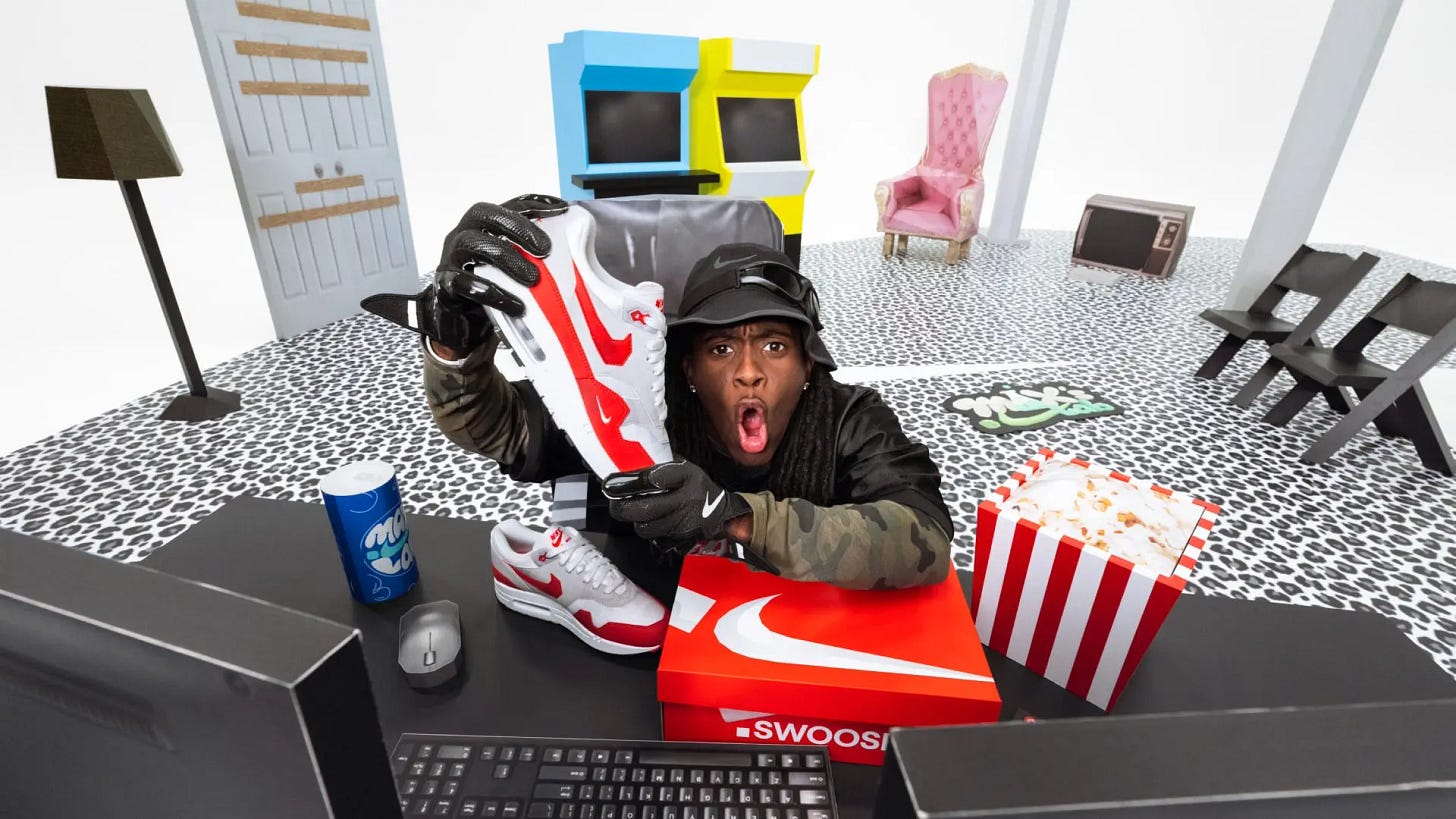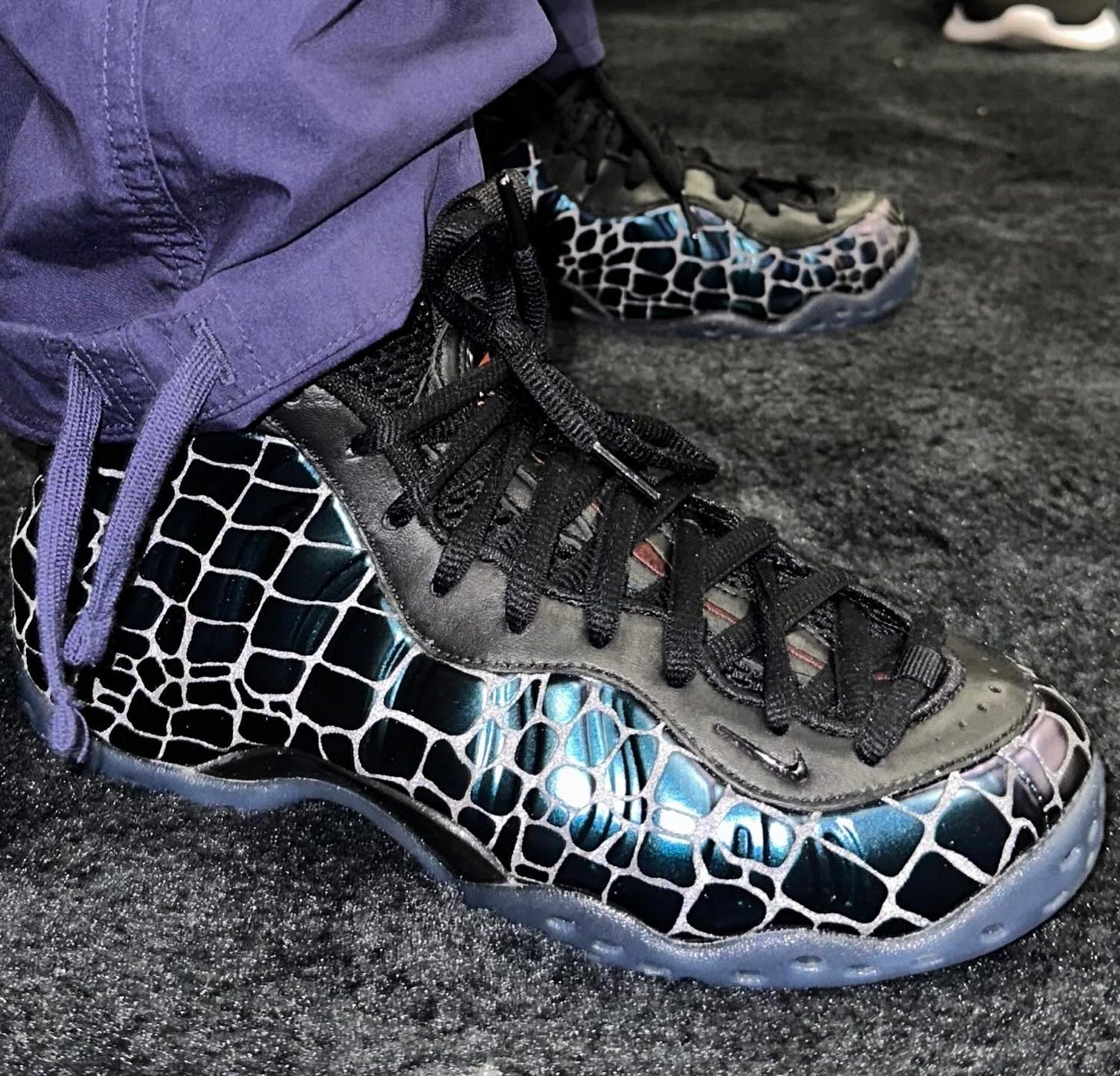In 2024, Nike's .SWOOSH Went All In On Gaming
In the wake of RTFKT's closure, .SWOOSH leaves behind NFTs.
In 2020, when millions turned to Google in search of face masks, hand sanitiser and toilet paper, the top “where to buy” search was for the PS5, which only launched in November. The Xbox Series X followed close behind, claiming the fourth spot. Clearly gaming was having a massive moment, providing an escape from the collective madness of a global pandemic.
Two years later, as the pandemic persisted, another virtual phenomenon claimed the top spot: “What is an NFT?”. The soaring popularity of video games and NFTs begged the question, “are we starting to value digital goods over physical ones?”
The fashion market responded, initially favouring investment into NFTs over video games. With the unprecedented promise of aftermarket creator royalties every time an NFT swapped hands, it was a capitalist’s fever dream. Prada, Gucci, Louis Vuitton, PUMA, Adidas - everyone took a punt on NFTs. Nike of course took the biggest. It started in 2021 with their purchase of RTFKT, a revolutionary NFT sneaker brand that was bootlegging Nike designs (amongst other cultural artifacts) and selling them to a tight-knit community of early adopter Web3 style enthusiasts. Instead of taking legal action, Nike saw this as an opportunity. After Nike bought RTFKT, they used the vision of its founder Benoit Pagotto as a blueprint to create .SWOOSH (dotswoosh) in 2022.
.SWOOSH was fashion’s first bonafide commitment to Web3, taking it further than predecessors such as Prada’s Time Capsule and the Tiffany & Co.’s Cryptopunk Jewellery. As people grew tired of the term “NFT”, .SWOOSH opted for “virtual goods” instead.
It started as an education program, looking to teach people about the tenets of Web3 creation, characterised by creative collaboration between the wearer and designer. “We were shaping a marketplace of the future with an accessible platform for the Web3-curious," said Rob Faris, Head of Nike Studios. While the mission was exciting, .SWOOSH emerged in a time of Web3 scepticism. ‘Crypto-Winter’ ensued as speculators fled the market and NFT value plummeted.
“Wen Utility” became the collective chant of the disenchanted - referring to people’s confusion around when and how to use NFTs. Nike went into battle against the downturn of NFTs, a herculean task that even the Goddess of Victory herself couldn’t conquer. Community backlash and waning interest in Web3 led to a do-or-die pivot for .SWOOSH.
On January 12th, 2024 .SWOOSH announced they were going all in on gaming. With athletes like LeBron James breaking the top 100 MADDEN Players and Cailtin Clarke travelling with a PS5 throughout the WNBA season, this felt like a natural move. Nike increased their existing integration in sports games including EA FC 25 and NBA 2K. Beyond this, Nike signed their first streamer - Kai Cenat. Love him or hate him, Cenat is one of the first major streamers to really break out of the stereotypical gamer mold. Spend a few minutes on his Instagram and you’d be forgiven for thinking he was a rapper, designer, creative director…anything but a gamer.
Thanks to .SWOOSH, the leaping legacy of Jordans and Nike Airs found a new frontier in games like Fortnite as players leap from build-to-build in Battle Royale. The bespoke Nike x Fortnite Kicks feature offers extensive customisation, supporting over 500 existing Fortnite skins. Nike is betting on the next Martine Rose or Clint 419 of Corteiz bouncing about in Fortnite, hungry for a chance to put their spin on iconic sneakers. While virtual integration into Fortnite isn’t a surprising move in the gaming and fashion space - the ways in which .SWOOSH is crossing back into the physical world is. Select sneakers, such as the Air Jordan 3 “Black Cement”, now launch in-store and in-game, bridging the digital and physical sneaker experience.
The best gaming and fashion partnerships create dialogue between the digital and physical (see Gentle Monster for instance). This year .SWOOSH worked with Tekken 8 to create the Nike Foamposite One Kazuya, a model that showed up digitally before it launched physically. The shoe was inspired by the father-son duo Kazuya Mishima and Jin Kazama, two iconic Tekken characters. This strategy aptly reflects the insight that 50% of Gen Z gamers are inspired to buy the same clothes IRL that their avatars or characters wear in-game.
If .SWOOSH had continued to position itself as an NFT brand, it may have never emerged from the trough of disillusionment where new ideas lose steam. Rising from the ashes of RTFKT, .SWOOSH pivoted to gaming. It still carries the spirit of digital innovation that RTKFT once had but supercharges it with gameplay features and physical product twins.
Five years on from the pandemic, digital goods are not favoured over physical ones. But the interplay between the two is where successful Web3 programs such as .SWOOSH operate today.


